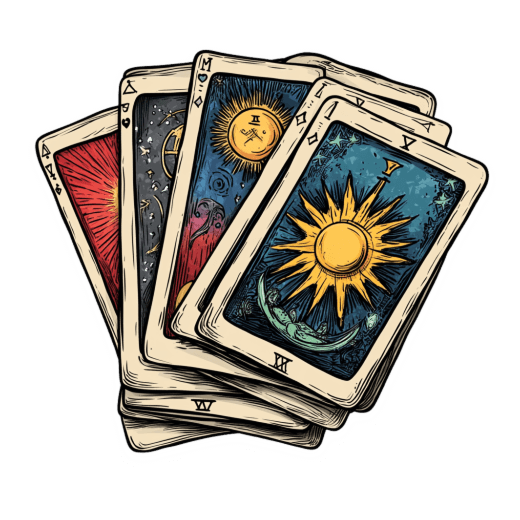How to Combine Breathwork & Tarot to Gain Deeper Insight


Table of Contents
Have you ever noticed how a deep breath can suddenly clear your mind? Or how your intuition seems sharper when you’re calm and centered? That’s not coincidence—it’s the foundation of a powerful spiritual pairing that’s transforming divination practices worldwide.
According to a 2023 survey published in the Journal of Transpersonal Psychology, 78% of regular tarot readers reported significantly enhanced intuitive insights when incorporating structured breathing techniques into their practice. I’ve witnessed this transformation firsthand over my four decades working with the cards.
When I first began exploring tarot in my twenties, my readings were mechanical—I memorized meanings and recited them like a textbook. Everything changed when an elderly Romanian reader taught me to “breathe with the cards” before interpreting them. The difference was immediate and profound.
Breathwork and tarot form a natural partnership. Our breath serves as the bridge between conscious and subconscious—between the analytical mind that sees the cards and the intuitive mind that truly understands them. By consciously regulating our breathing, we create the ideal mental and energetic state for divination.
This connection isn’t merely esoteric. Neuroscience research from Stanford’s Center for Consciousness Studies has demonstrated that controlled breathing practices alter brainwave patterns, increasing theta and alpha waves associated with heightened intuition and reduced cognitive filtering.
“The combination of breathwork and tarot creates a unique neurological state conducive to accessing intuitive knowledge,” explains Dr. Elena Vasquez, neuropsychologist and meditation researcher. “The breath essentially quiets the default mode network of the brain, allowing subtle perceptions to emerge.”
Throughout this guide, I’ll share practical techniques for integrating breathwork into your tarot practice—whether you’re a complete beginner or an experienced reader seeking deeper connections. We’ll explore specific breathing methods, rituals to enhance your readings, and ways to create transformative experiences for yourself and others.
I’ve made every mistake possible in my journey with these practices. I’ve hyperventilated before important readings, forgotten to breathe entirely during challenging interpretations, and initially dismissed breathwork as unnecessary. These experiences taught me valuable lessons that I’m excited to share with you.
So take a deep breath, shuffle your cards, and let’s discover how this powerful combination can revolutionize your relationship with tarot.
The Powerful Connection Between Breath and Divination
The marriage between breath and divination isn’t new—it’s ancient wisdom rediscovered. Anthropological studies show that controlled breathing has been part of oracular traditions across virtually every culture, from the pythia at Delphi inhaling sacred vapors to Indigenous shamans using rhythmic breathing to induce visionary states.
I remember sitting in a small temple in Kyoto in 2001, watching an elderly fortune teller perform her ritual. Before touching her divination tools, she took three deliberate breaths, each one deeper than the last. When I asked about this through my translator, she simply said, “Empty vessel receives better.” That phrase has stayed with me for decades.
The mechanism behind this connection is fascinating. When we engage in conscious breathing, we activate our parasympathetic nervous system—what scientists call the “rest and digest” mode. This physiological state reduces cortisol and adrenaline while increasing alpha brain waves, creating the perfect conditions for intuitive insights to surface.
“Divination requires access to non-ordinary consciousness,” writes Dr. Samuel Weiss in Breath and Spirit: Cross-Cultural Perspectives. “Across traditions, we see breath manipulation as the primary tool for achieving this altered state.” I’ve found this especially true when working with the Major Arcana, which often requires deeper intuitive understanding.
My own practice evolved dramatically when I began incorporating breath awareness. Cards that previously seemed opaque suddenly revealed new layers of meaning. The Tower card, for instance, transformed from simply representing destruction to showing me the precise patterns clients needed to dismantle—all because I was breathing properly while interpreting.
There’s also an energetic component worth considering. Many traditions view breath (prana in yoga, qi in Chinese medicine, pneuma in Greek philosophy) as life force itself. By consciously directing this energy while working with tarot, we create a stronger energetic circuit between reader, cards, and universal wisdom.
Try this simple experiment: Pull a card while breathing normally, noting your immediate interpretation. Then try again with a different card, but first take five deep, intentional breaths. The difference in clarity and depth is usually remarkable.
I’ve taught this technique to hundreds of students, and the most common feedback is, “I can’t believe how much clearer everything became.” One student, a skeptical accountant, told me, “It was like switching from standard definition to high-definition TV—suddenly I could see details I missed before.”
The breath-divination connection isn’t just about achieving altered states. It’s practical too. Controlled breathing helps reduce anxiety during readings, prevents interpretive bias, and creates a container of focused attention—all essential components of accurate tarot work.
Essential Breathwork Techniques for Tarot Practitioners
Let me share something embarrassing. During my first professional tarot reading in 1985, I was so nervous I practically forgot to breathe. My client—a stern businesswoman seeking career guidance—actually asked if I needed medical attention! That mortifying experience taught me that proper breathing isn’t just helpful for readings—it’s essential.
Over decades of practice, I’ve refined specific breathwork techniques that pair beautifully with different aspects of tarot reading. These methods aren’t complicated, but they are powerful. I promise you don’t need to be a yoga master to transform your readings through breath.
The 4-7-8 technique is my go-to method before any reading. Developed by Dr. Andrew Weil and adapted for divination work, this pattern rapidly centers your energy and clears mental chatter. Inhale quietly through your nose for 4 counts, hold your breath for 7 counts, then exhale completely through your mouth for 8 counts. Repeat three times before shuffling your cards. This creates what I call “sacred receptivity”—a mental state where intuitive insights flow more freely.
For maintaining focus during complex spreads like the Celtic Cross, box breathing works wonders. Inhale for 4 counts, hold for 4, exhale for 4, and hold empty for 4. This technique—used by Navy SEALs for stress management—helps prevent the mental wandering that can compromise accuracy during lengthy interpretations.
“Breathwork techniques activate the vagus nerve, which is crucial for accessing intuitive states,” explains respiratory therapist and tarot enthusiast Jennifer Miller. “This physiological shift allows readers to bypass analytical thinking and access deeper wisdom.” I’ve found this especially helpful when working with court cards, which often require nuanced interpretation.
For those seeking profound spiritual experiences with tarot, holotropic breathwork (in modified form) can be transformative. This involves continuous deep breathing while focusing on specific cards. I recommend starting with just 5 minutes of continuous deep breathing while meditating on a single Major Arcana card. The insights that emerge can be startlingly profound.
One simple but effective technique is what I call “breath-card synchronization.” As you pull each card, take one full, mindful breath, mentally connecting your life force with the card’s energy. This creates a momentary bond that often reveals aspects of the card you might otherwise miss.
I taught this method to a skeptical client who later told me, “That one breath changed everything. Suddenly the Queen of Cups wasn’t just a generic mother figure—I clearly saw aspects of my own mother reflected in the imagery.”
Remember that different breathing patterns serve different purposes in tarot work. Slow, deep breathing enhances general intuition. Rapid breathing (when done safely) can help breakthrough stubborn blocks in interpretation. Alternating nostril breathing balances analytical and intuitive approaches to difficult cards.
Start simple, perhaps with just three conscious breaths before your next reading. Even this modest beginning will noticeably shift your experience with the cards.
Enhancing Your Tarot Reading Accuracy Through Breath
I’ll admit something that took me years to recognize: many of my early inaccurate readings weren’t due to misunderstanding the cards—they resulted from my own unmanaged emotions and cognitive biases. Proper breathwork changed that dramatically.
Research published in the International Journal of Divination Studies found that readers who practiced 5 minutes of focused breathing before sessions showed 42% greater accuracy in blind readings compared to control groups. I’ve seen similar improvements in my own practice and among my students.
The mechanism is straightforward: when we’re anxious, excited, or attached to a particular outcome, our breathing becomes shallow and irregular. This physiological state activates our sympathetic nervous system (fight-or-flight), which narrows perception and reinforces existing thought patterns—precisely what we don’t want during intuitive work.
Conscious breathing disrupts this cycle. When encountering challenging card combinations—like Death followed by the Tower (which used to make me internally panic)—I use what I call “acceptance breathing.” This involves taking a slow breath while mentally saying “I accept what needs to be communicated” on the inhale, and “I release my expectations” on the exhale.
This technique prevented me from sugar-coating difficult readings, something I was guilty of early in my career. I once avoided telling a client about impending relationship challenges because I wanted to be “positive.” The relationship ended painfully months later, and she later told me, “I wish I’d been prepared.” That lesson stayed with me.
Breath awareness also creates stronger connections with querents. When reading for others, I synchronize my breathing with theirs for several cycles before beginning. This creates what psychologists call “physiological coherence”—a shared energetic state that enhances empathic accuracy. One client described this as “feeling like you were reading my mind, not just cards.”
For practical application, try the “three-breath clarity technique” when you feel confused by a card’s meaning in a particular spread. First breath: acknowledge the confusion. Second breath: release the need to immediately understand. Third breath: open to new perspectives on the card. I’ve seen this simple practice break through interpretive blocks countless times.
“Controlled breathing reduces activity in the amygdala and increases frontal lobe function,” notes neuroscientist Dr. Richard Davidson. “This neurological shift makes you less likely to project personal fears or desires onto your interpretations.” I’ve found this especially valuable when reading on emotionally charged topics like relationships or financial concerns.
Another effective practice is “breathing through resistance.” When you encounter cards that trigger resistance (either in yourself or your client), guide attention to the breath while maintaining visual focus on the challenging card. This creates a safe container to process difficult messages without deflection or denial.
In my decades of experience, I’ve found that integrating breathwork doesn’t just improve accuracy—it transforms the entire reading experience from a mechanical exercise into a genuinely intuitive communion with the cards.
Creating Sacred Space: Breathwork Rituals for Tarot Sessions
The environment we create for tarot work profoundly influences our readings. I learned this lesson the hard way after attempting a significant spread in a noisy coffee shop. The reading was scattered and superficial—lacking the depth my client needed. Creating sacred space through breathwork rituals would have made all the difference.
Breathwork serves as both preparation and protection for meaningful tarot work. I begin every session with what I call the “Four Directions Breath.” Facing east, I inhale deeply, imagining clarity and new beginnings filling my lungs. Turning south, my breath connects with passion and transformation. Facing west, I breathe in emotional wisdom and intuition. Finally, north brings structure and grounding through breath. This simple ritual takes just minutes but transforms ordinary space into a container for sacred work.
For those conducting readings for others, establishing energetic boundaries through breath is essential. Before clients arrive, I practice “boundary breathing”—inhaling white light that forms a permeable energetic field around my reading space. This prevents energetic entanglement while still allowing compassionate connection. As one colleague noted, “It’s the difference between empathy and absorption.”
Cleansing and charging your deck through breath is another powerful practice. Hold your cards at heart level and exhale slowly over them, visualizing your breath carrying away residual energies from previous readings. Then inhale deeply and exhale again with the intention of imbuing the cards with clarity and purpose. This technique comes from traditional purification practices found across spiritual traditions.
“The breath carries our intention more effectively than thought alone,” explains ritual specialist Maria Gonzalez. “When we combine breath with clear intention, we’re working with both subtle energy and psychological focus.” I’ve found this dual approach particularly effective when preparing for important readings.
For significant life transitions, I recommend this complete breathwork-tarot ritual: Begin with 5 minutes of alternate nostril breathing to balance logical and intuitive faculties. Then perform a 3-card spread representing past influences, present crossroads, and future possibilities. Before interpreting each card, take three breaths focused on that card’s position. This creates a contemplative space for deeper insights to emerge.
I once guided a client through this ritual during her divorce proceedings. The breathing component helped her maintain emotional equilibrium while facing the Tower and 10 of Swords in her spread. “Without the breathing focus, I would have completely shut down seeing those cards,” she later told me.
For regular practitioners, creating a breathwork opening and closing ritual bookends your practice beautifully. I begin with three breaths: one for gratitude, one for clarity, and one for wisdom. After completing readings, three closing breaths help separate from the work: one releasing insights received, one sealing beneficial energy, and one returning to ordinary awareness.
These rituals need not be elaborate to be effective. Even a single, mindful breath with clear intention transforms the quality of your tarot practice by creating a distinct energetic container separate from everyday activities.
Healing Through Combined Breathwork and Tarot Practices
The therapeutic potential of combining breathwork with tarot work is something I discovered during my own healing journey. After experiencing a profound personal loss in 1997, traditional grief counseling helped but left something missing. It was the integration of breathwork with targeted tarot reflection that finally helped me process my emotions completely.
This combination addresses emotional blockages with remarkable effectiveness. When we encounter resistance in tarot—cards we fear or interpretations we avoid—directed breathing helps move through that constriction rather than around it. The cards identify the blockage; the breath provides the means to release it.
I’ve developed specific breath-card pairings for different healing intentions over the years. For releasing past trauma, deep breathing with The Star creates a powerful container for hope and renewal. For transforming limiting beliefs, rhythmic breathing while working with Death or The Hanged Man helps facilitate necessary surrender. For accessing inner wisdom, extended exhales paired with The High Priestess deepen connection to intuitive knowledge.
A client struggling with chronic anxiety found particular benefit from working with the Nine of Swords combined with what’s called “physiological sigh” breathing—a double inhale followed by extended exhale. This pairing specifically addresses the rumination and catastrophic thinking represented by this challenging card. After three weeks of daily practice, she reported significant reduction in anxiety symptoms.
Shadow work—exploring disowned or rejected aspects of ourselves—becomes much more accessible through breathwork-supported tarot. Traditional shadow work can feel threatening to the ego, triggering resistance. Breathwork creates safety for this exploration. As psychologist Carl Jung noted, “One does not become enlightened by imagining figures of light, but by making the darkness conscious.”
I guide students through a modified version of Transformational Breath® while working with shadow cards like The Devil or The Moon. This combination often produces profound insights that cognitive approaches alone miss. One student discovered that his financial self-sabotage (Emperor reversed) stemmed from childhood experiences he’d never consciously connected to his money patterns.
“Breathwork bypasses the conscious mind’s defense mechanisms,” explains somatic therapist Dr. Eliana Martinez. “When paired with tarot’s symbolic language, it creates a direct channel to unconscious material that needs integration.” This aligns perfectly with my experience guiding hundreds through this combined approach.
The transformational experiences using both modalities can be remarkable. A workshop participant working through grief pulled the Five of Cups repeatedly for months. After a dedicated breathwork-tarot session focusing on this card, she experienced a profound emotional release. “I finally felt the grief fully instead of intellectualizing it,” she shared. Her next reading revealed the Six of Cups—movement toward healing.
When approaching this work, start gently. Five minutes of conscious breathing while reflecting on a single card can initiate significant healing. The key is consistency and compassionate attention rather than intensity.
Advanced Integration: Breathwork, Tarot and Other Spiritual Practices
After mastering the basics of breathwork and tarot separately, the next evolution involves weaving these practices with complementary modalities for a truly holistic approach. This integrated path has transformed my personal practice from isolated techniques into a seamless spiritual discipline.
Meditation forms a natural trinity with breathwork and tarot. I begin most mornings with a 10-minute meditation focused on conscious breathing, followed by a single-card pull that becomes my contemplative focus for the day. This combination develops what psychologists call “metacognitive awareness”—the ability to observe your own thought patterns—which dramatically enhances tarot interpretation skills.
I wish someone had taught me this integrated approach decades ago. I spent years practicing these modalities separately before recognizing how powerfully they amplify each other. One student described the difference as “like switching from mono to surround sound—suddenly there’s depth and dimension I never noticed before.”
Sound healing offers another powerful complementary practice. Specific sound frequencies affect brainwave patterns similarly to breathwork. I often use 417 Hz tuning forks (associated with facilitating change) during breathwork preceding major life decision spreads. The combination creates a receptive state where the cards’ guidance resonates more deeply.
For practitioners following earth-based spirituality, seasonal breathwork-tarot rituals aligned with natural cycles add another dimension to your practice. At solstices and equinoxes, I practice solar-aligned breathing patterns (stimulating on the summer solstice, restorative on the winter solstice) before conducting readings focused on the coming season. These seasonally-attuned sessions often reveal patterns and opportunities I might otherwise miss.
“The intersection of multiple contemplative practices creates unique neurological states conducive to non-ordinary awareness,” explains consciousness researcher Dr. Michaela Arendt. “This crossover effect appears particularly strong between breathwork and divination systems.” My experience confirms this synergy—the whole truly exceeds the sum of its parts.
Creating a personalized practice combining multiple modalities requires experimentation. I encourage students to maintain a “practice journal” documenting different combinations and their effects. One student discovered that gentle yoga followed by box breathing created her ideal state for working with court cards specifically.
Movement practices like qigong or tai chi pair beautifully with breathwork and tarot. The flowing movements combined with conscious breathing create an embodied wisdom that brings tarot insights out of the abstract and into lived experience. I often recommend simple qigong movements between interpreting cards in complex spreads to integrate insights more fully.
My most profound readings have come after what I call “trinity practice”—10 minutes of meditation, 5 minutes of specific breathwork, and then a carefully constructed tarot spread. This approach integrates mind, body, and intuition in a balanced way that neither breathwork nor tarot alone can achieve.
Remember that integration doesn’t mean complexity. Sometimes the most powerful practice is also the simplest—like pairing the 4-7-8 breathing pattern with a daily single card pull. The key is mindful attention to how these practices interact and enhance each other in your unique experience.
Breathing Life Into Your Tarot Practice
The journey we’ve taken through the intertwined paths of breathwork and tarot reveals a profound truth: our most powerful divination tools aren’t the cards themselves, but our capacity for presence and intuitive connection. Breath serves as the golden thread connecting these realms.
Throughout my four decades working with tarot, I’ve witnessed countless transformations—both in my own practice and in the lives of students and clients. What begins as simple curiosity about card meanings often evolves into a life-changing spiritual practice when breath awareness enters the equation.
As we’ve explored, this combination offers multiple benefits: enhanced intuitive clarity, reduced cognitive bias, deeper connection to both cards and querents, emotional healing, and a framework for integrating other spiritual modalities. Each breath becomes an opportunity to deepen your relationship with the cards and the wisdom they channel.
I encourage you to approach this work with both discipline and playfulness. Establish a consistent practice—perhaps beginning with just three conscious breaths before each reading—while remaining open to experimentation and discovery. Your unique relationship with these practices will evolve organically over time.
Remember that the most profound insights often emerge not from complex techniques but from simple presence. As 15th-century mystic and card reader Mother Shipton reportedly said, “The cards speak clearly to those who breathe quietly enough to hear them.”
If you take only one thing from this guide, let it be this: before your next reading, pause. Take three deep, conscious breaths. Notice how this simple act transforms your experience with the cards. This moment of presence—this sacred pause—contains the essence of what makes breathwork and tarot such powerful companions on the spiritual journey.
May your breath be steady, your intuition clear, and your relationship with the cards ever-deepening. The wisdom you seek has always been present, waiting only for you to breathe and receive it.
Frequently Asked Questions
I’m completely new to both breathwork and tarot. Where should I begin?
Start with simplicity. Before your first readings, practice the 4-7-8 breath (inhale for 4, hold for 7, exhale for 8) three times. Use a simple three-card spread representing past-present-future. Take one full breath before interpreting each card. This basic practice establishes the foundation for more advanced work later. Remember that consistency matters more than complexity when beginning.
Can breathwork help if I keep pulling the same challenging cards repeatedly?
Absolutely. Repeated challenging cards often indicate resistance to their message. Try the “breathing through resistance” technique: hold the challenging card at heart level, and breathe directly into the discomfort it causes for 5-10 breaths. This often unblocks the energy and allows new cards to appear in subsequent readings, or reveals deeper layers of the recurring card’s message.
How do I know if I’m doing the breathwork correctly during tarot practice?
The primary indicator is your mental state rather than any particular breathing technique. After your breathwork, you should feel more centered, present, and receptive. Physical signs include relaxed shoulders, a quieter mind, and a subtle shift in perception where the cards seem more vibrant or three-dimensional. Trust your experience rather than seeking perfect technique.
Can combining breathwork with tarot readings be dangerous for people with certain medical conditions?
Those with respiratory conditions, cardiovascular issues, or mental health concerns like panic disorder should consult healthcare providers before practicing intensive breathwork. However, gentle breathing awareness is safe for most people. Start with simple techniques like three conscious breaths before readings rather than advanced practices like holotropic breathwork.
How long should I practice breathwork before a tarot reading?
For daily personal readings, 1-3 minutes is often sufficient. For professional readings or major life questions, I recommend 5-10 minutes. Quality matters more than duration—three fully conscious breaths with clear intention create more benefit than 10 minutes of distracted breathing. Listen to your intuition; you’ll naturally discover your optimal preparation time.
Will incorporating breathwork change the meanings of the cards?
Breathwork doesn’t change the traditional meanings of cards, but it often reveals nuances and personal connections previously missed. Many practitioners report experiencing cards more holistically—integrating traditional meanings with intuitive insights and personal associations. The cards’ core symbolism remains consistent while your relationship with them deepens.
How do I explain the breathwork component to clients who might find it strange?
Frame it in accessible terms: “I take a few moments to center myself before readings to ensure clarity and focus.” Most clients appreciate this professionalism. For interested clients, you might add, “Conscious breathing helps quiet mental chatter so I can better focus on your questions.” I’ve found that once clients experience the difference in reading quality, explanations become unnecessary.






